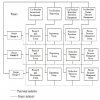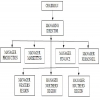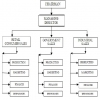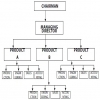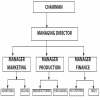Home | ARTS | Management Concepts & Organisational Behaviour
|
Contingency Organization Design - Organisation Structure And Design
Management Concepts & Organisational Behaviour - Organisation Structure And Design
Contingency Organization Design - Organisation Structure And Design
Posted On :
In contrast to the models discussed so far, several contingency systems of late have come into wider practice.
Contingency
Organization Design
In contrast to the models discussed so far, several contingency systems of late have come into wider practice. The emphasis in these systems is on flexibility. Accordingly, so many flexible structures are adopted these days to meet the specific needs of the organizations. This approach basically led to the development of a contingency theory of organization. The approach is based on the exigencies of the situation. William F. Glueck, offers the following guidelines for contingency design:
-- When low cost and efficiency are the keys to successful goal achievement, organizations should use functional depart mentation;
-- When the environment is complex, matrix structure is effective;
-- If the organization is large and operates in a stable environment, it can afford a more formal or rigid structure;
-- The greater the intensity of competition, the greater will be the degree of decentralization;
-- The greater the volatility of the environment, the more decentralized and
flexible the organization has to be; and
-- Companies that adopt the organizational structure appropriate to their strategy will be more effective than those that use an inappropriate style.
In contrast to the models discussed so far, several contingency systems of late have come into wider practice. The emphasis in these systems is on flexibility. Accordingly, so many flexible structures are adopted these days to meet the specific needs of the organizations. This approach basically led to the development of a contingency theory of organization. The approach is based on the exigencies of the situation. William F. Glueck, offers the following guidelines for contingency design:
-- When low cost and efficiency are the keys to successful goal achievement, organizations should use functional depart mentation;
-- When the environment is complex, matrix structure is effective;
-- If the organization is large and operates in a stable environment, it can afford a more formal or rigid structure;
-- The greater the intensity of competition, the greater will be the degree of decentralization;
-- The greater the volatility of the environment, the more decentralized
-- Companies that adopt the organizational structure appropriate to their strategy will be more effective than those that use an inappropriate style.
Tags : Management Concepts & Organisational Behaviour - Organisation Structure And Design
Last 30 days 391 views













